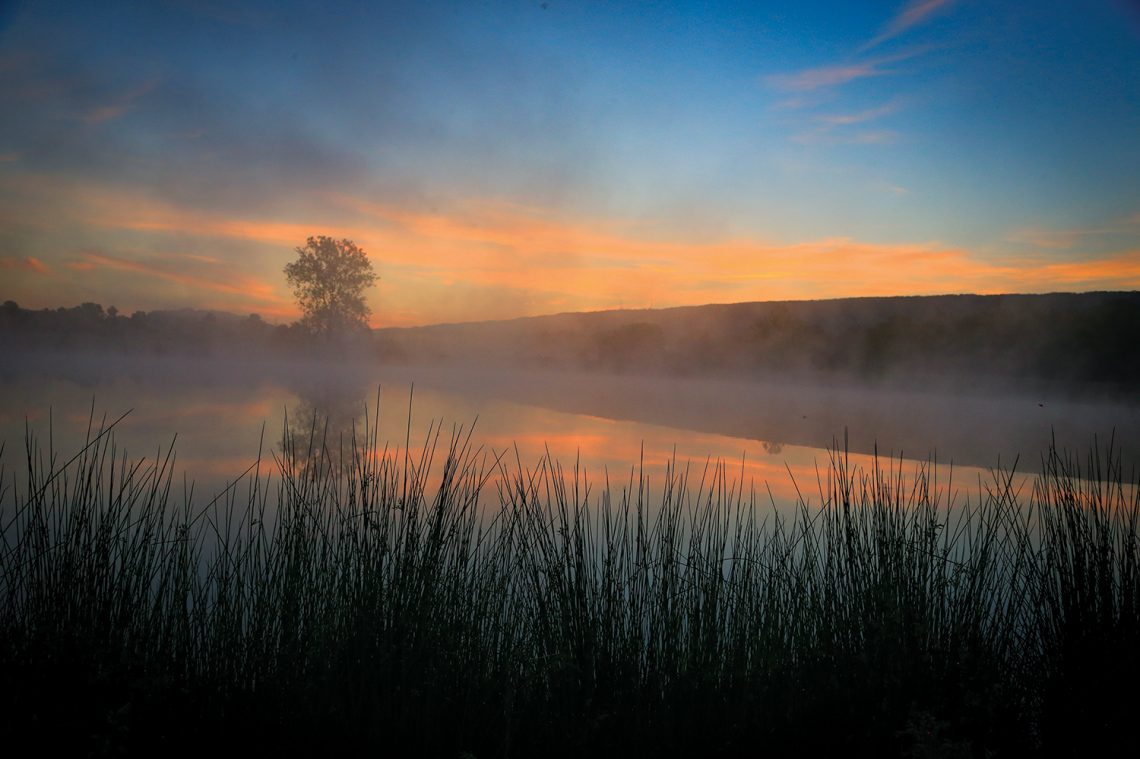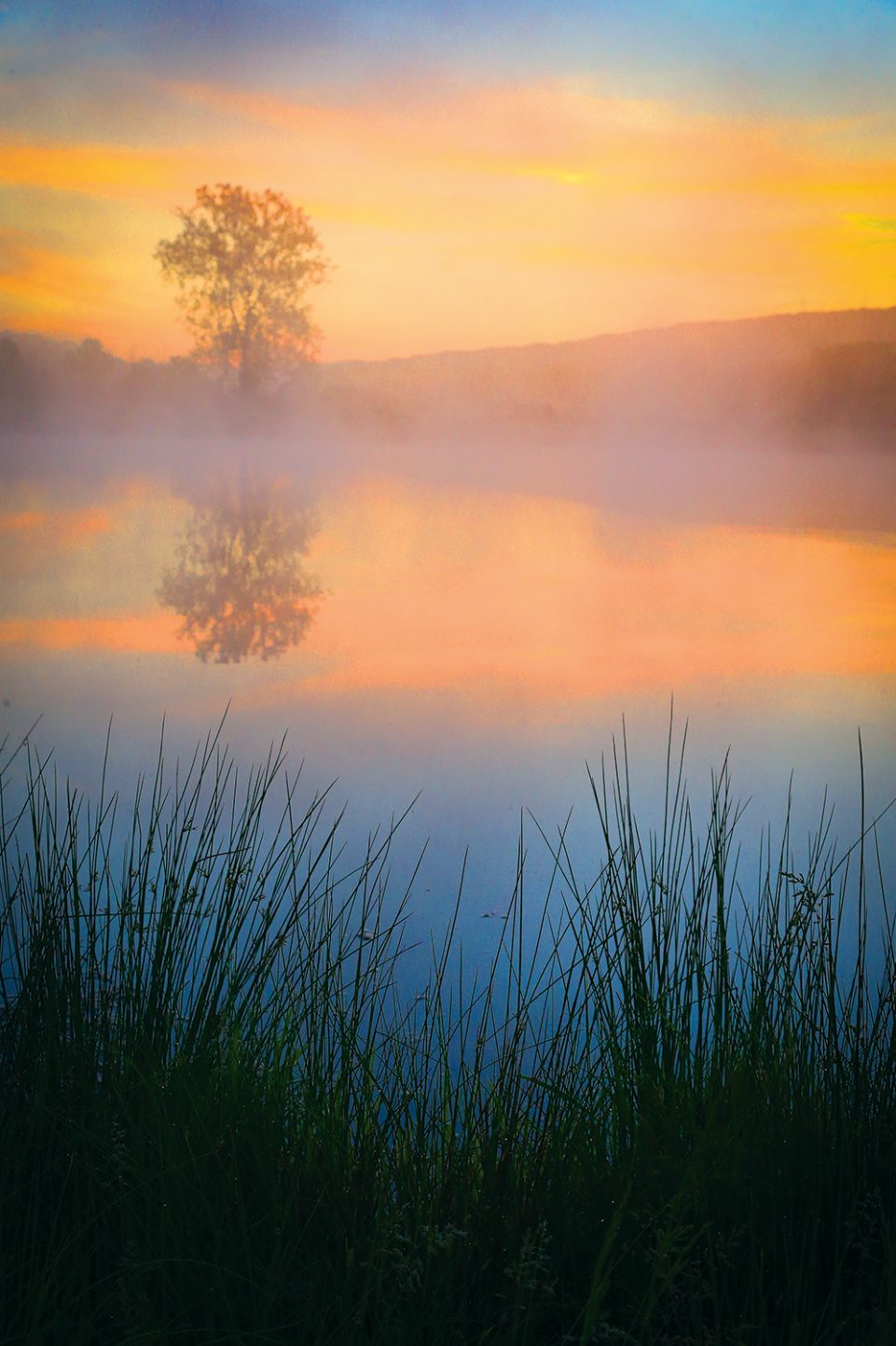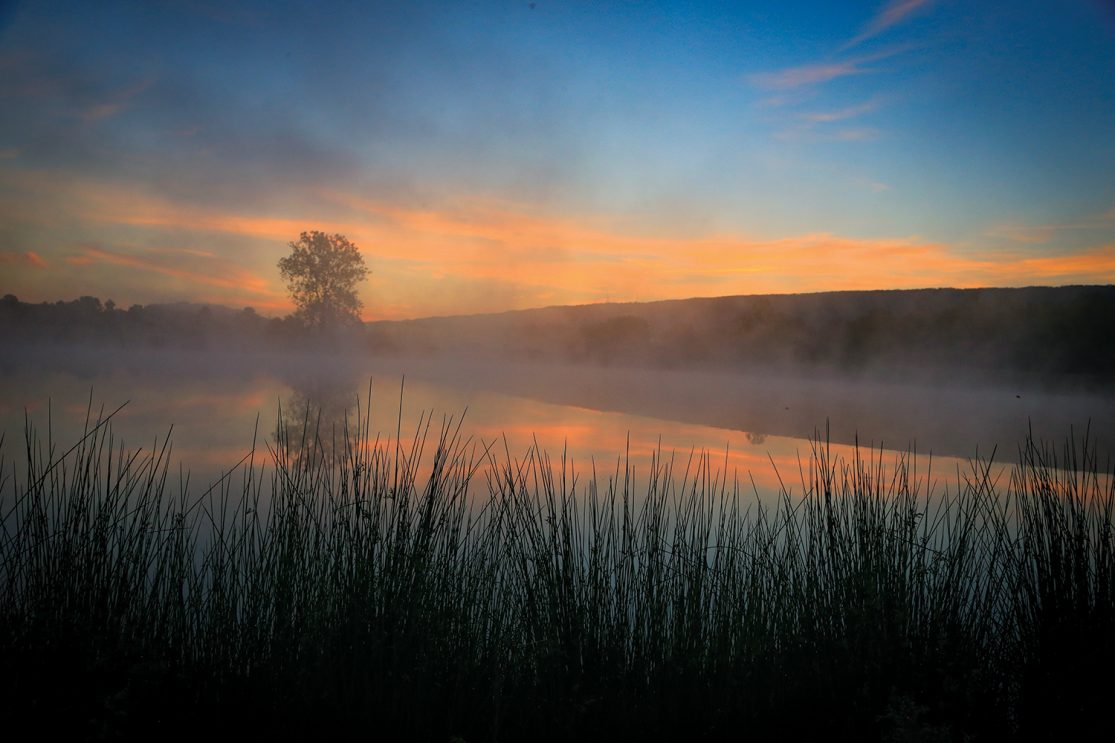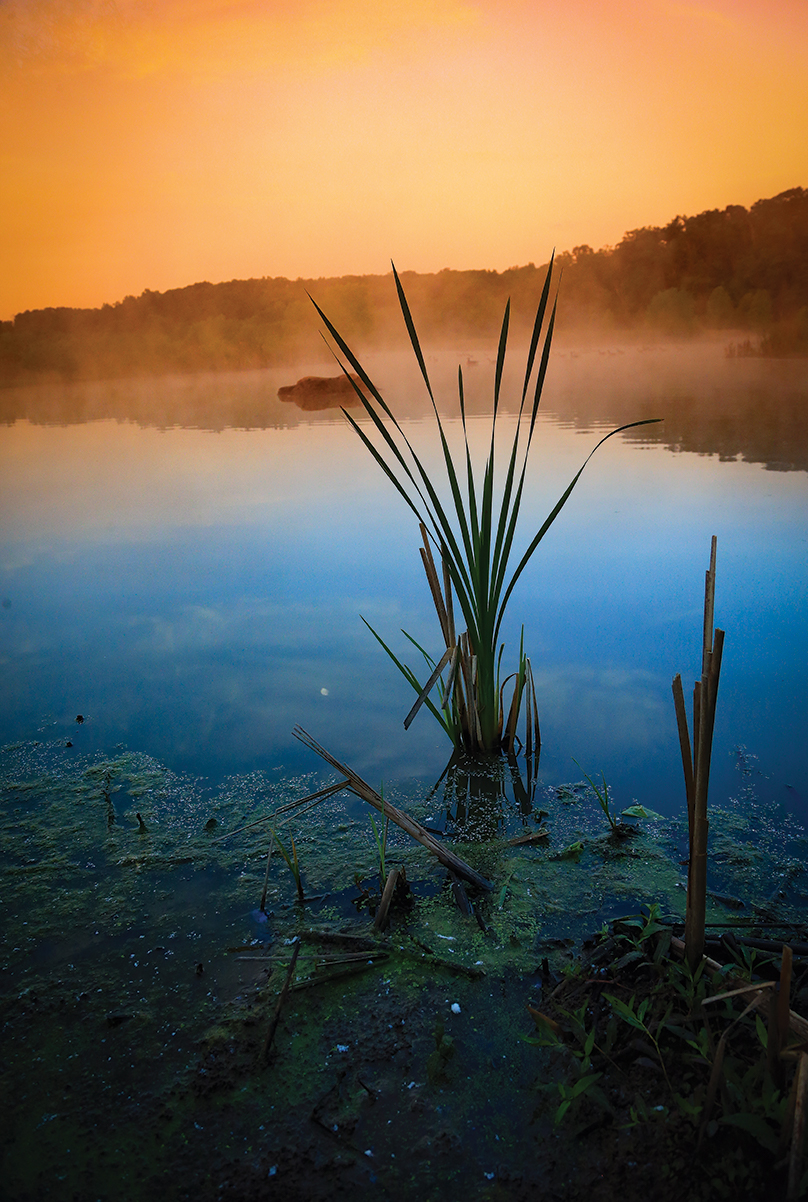
Preserving Stauffer’s Marsh
The Potomac Valley Audubon Society works to keep Stauffer’s Marsh a beautiful and balanced home for native wildlife.
Story by Mary Heath
Photography by Steve Whysall
Often unnoticed by those driving along Back Creek Valley Road in Berkeley County, the serene meadows and wetlands that make up Stauffer’s Marsh Preserve provide crucial habitat for migrating and nesting waterfowl. As many as 167 species have been documented in this area of just over 47 acres, a tremendously successful resettlement of wildlife. The thriving marsh is a result of many years spent bringing this area back to a natural state and underscores the possibilities for continuing to restore local wilderness.
A natural wetland, this area was farmed for decades until the mid-1990s when it was placed into a federal conservation program and a dam was built along the sides of the area to re-form the pond. This initial restoration was the first of its kind in West Virginia. In 2011, owners Stauffer and Elinor Miller donated the marsh to the Potomac Valley Audubon Society. This nonprofit, based in Jefferson County, continues to enroll most of the preserve in a conservation easement program through the U.S. Department of Agriculture and National Resources Conservation Service wetlands reserve program, but provides public access as it manages and improves the land.
Katelyn “KC” Walters, an Audubon Society land and conservation manager, delights in guiding visitors through the marsh and its lush, bright features such as the pollinator meadow on the northeastern side. But, she notes, “this is not as pretty as it will be.” Her staff and volunteers continue to remove invasive, non-native plants that have taken over the area and replace them with colorful and beneficial native pollinator species.
This work to replace invasive plants began in fall 2018, as Walters and a volunteer seeded the field with a mix custom-made for the site based on its soil type. That field now has a cover crop, which holds the soil and protects the native plant seeds.
“It grows tall real fast, so we have to keep it cut down so it doesn’t shade out all the little baby pollinator plants that are coming in,” Walters says, eyeing the field.
These native pollinator plants will also provide habitat for grassland nesting birds.
Visitors can observe some of the many birds found in the marsh, including Canada geese, chimney swifts, mallard ducks, gold finches, cedar waxwings and indigo buntings.
But birds are not the only wildlife that find haven in the marsh—amphibians and frogs also breed in vernal pools beyond the marshland in wet woods that stretch into Back Creek’s winding waters.
Such varied habitats enable this natural life to thrive. “You got your open field, your grassland and then you have your wetland,” Walters says. A chorus of frogs can be heard, punctuated, on occasion, with the guttural call of a bullfrog or two and a cacophony of bird calls and chirps. Only the intermittent sound of a passing car or plane flying overhead reminds visitors civilization is not too far away.
Having the marsh abut Back Creek Valley Road is both a blessing and a curse, Walters says. The wetland is easily accessible to visitors, but not every traveler is considerate of the marsh’s wildlife or natural state.
“People fly down that road,” Walters says.
That border between highway and wilderness is a difficult landscape to balance. Here, cattails dot the perimeter of the marsh; though they are technically an invasive species, they shelter many birds. Walters points to a redwing black bird, as an example, perched on one cattail on the far side of the pond.
While the cattail may have been intentionally introduced, other invasive species, such as the autumn olive and bush honeysuckle, are probably the fault of the birds themselves.
“They have tasty little berries that the birds like,” Walters says.
The birds likely eat the berries elsewhere and carry the seeds to the marsh in their droppings. Once in the marsh, these prolific seed producers provide food for the birds, but they also spread rapidly, creating monocultures when they outcompete native species.
“This reduces plant diversity,” she says. “All of our native species have a niche or ‘job’ in our ecosystem, providing food, shelter or some other function. The animals that rely on our native plant species cannot thrive when invasive species take over.”
Controlling invasive species protects native flora and fauna and the natural functions of the marsh ecosystem.
Rather than simply removing invasive plants that produce berries, Walters and volunteers replace them with native berry producers, like serviceberry and elderberry.
As the Audubon Society manages the plants, it also must adjust to a changing climate. An increase in rain, for example, has also required management. In nearby Martinsburg, West Virginia, summer rainfall totals for 2018 measured at 19.9 inches. Normal rainfall for the summer—June through August—is about 10 inches, according to weather officials with Accuweather.
“Last year, with the rains, we did have some epic flooding out here,” Walters says. “The pond actually crested the dam.”
Evidence of this flooding is readily seen on the path between the pond and Back Creek, where, a layer of dirt—once mud—is visible on ground vegetation where the creek rose out of its banks.
“Storms are definitely more severe out here than they used to be,” Walters says.
There are other signs of a changing climate at the marsh—species irruptions, for example. Irruptions are the irregular migration of birds to areas where they wouldn’t typically be found. As habitats are altered, species may “stay in an area that’s less desirable, but they think it’s OK because they have food there for them at that time,” Walters points out. Other species aren’t traveling to places they once used to—climate change is limiting their range.
“Out here, in particular, climate change is definitely affecting the rate of invasive species spread,” Walters says. “As far as invasive bug species, it was typically our cold, cold winters that were limiting the range of spread because it was killing them off, and now that we’re not having such harsh, cold winters, they’re not dying off.”
Walters notes it can be the same with some plant species as well.
And, of course, climate change can also just mean fewer species.
“I’ve had several people comment that they just don’t see the same diversity that they used to out here,” she says.
But despite these setbacks—or perhaps also because of them—Walters and like-minded residents in the area are working to make the marsh more hospitable to the native wildlife.
“We hope to eventually be able to moderate the water level of the pond to make it more of a mud flat in the summer months,” she says, “thus creating more of a paradise for waterfowl and shorebirds.”

“They have tasty little berries that the birds like,” Walters says.




